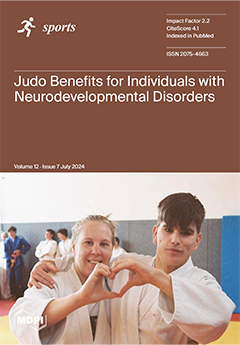In alignment with European policies regarding intergenerational sports, this study seeks to integrate existing evidence- (i.e., umbrella review) and eminence- (i.e., international validated educational courses for coaches) based knowledge on judo training across the lifespan. For evidence knowledge, searches of the Google Scholar,
[...] Read more.
In alignment with European policies regarding intergenerational sports, this study seeks to integrate existing evidence- (i.e., umbrella review) and eminence- (i.e., international validated educational courses for coaches) based knowledge on judo training across the lifespan. For evidence knowledge, searches of the Google Scholar, ISI-WoS, PubMed, and Scopus databases (PROSPERO ID: CRD42024535420) for studies focused on training youth and older judo practitioners, with no time restriction up to April 2024, were conducted. This resulted in 16 systematic reviews meeting the inclusion criteria, with an “excellent” (
n = 6), “good” (
n = 7), and “fair” (
n = 3) quality according to the NIH tool. With a large sample size (
n = 372,655), the reviews focused on wellbeing (
n = 9; bone status, injuries, and psychophysical effects) and performance (
n = 7; athlete success, combat time, rapid weight loss, and the Special Judo Fitness Test), examining athletic levels (novices to Olympics), sex, and age (children to older adults). For eminence knowledge, the International Judo Federation Academy courses encompassed the “Undergraduate Certificate as Judo Instructor” (UCJI), which provides a comprehensive structure for teaching judo, including techniques, moral code, roles, responsibilities, refereeing, safety, and age-specific belt examination requirements and progression, and the “Educating Judo Coaches for Older Practitioners” (EdJCO) curricula, which provide theoretical and applied modules (e.g., ageing, health, and organisation) to train older judo practitioners. The findings were summarised in a framework, highlighting the most relevant aspects of intergenerational judo programmes (i.e., aims, key characteristics, coaches’ roles, barriers, and facilitators). To develop a comprehensive educational intergenerational judo methodology, future research should examine coaches’ and practitioners’ opinions on intergenerational judo activities carried out in different national contexts.
Full article






